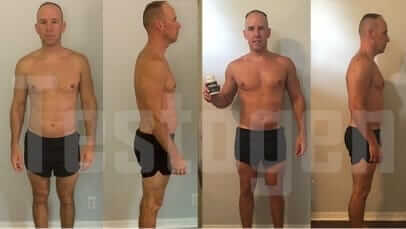If you’re looking to lose weight, then running is probably one of the first forms of exercise to cross your mind; it’s a simple, cheap, and easy way to burn calories and help with your fat-loss efforts. However, before you jump straight into a running program, there are a few things you’ll need to consider if you want to stay injury-free and attain the physique you’re looking for.
First things first: Why is running great for weight loss?
1. It’s simple:
There aren’t many activities simpler than running. You just have to put one foot in front of the other, and with every step you take you burn calories! It’s a pretty natural movement for almost everyone because our bodies were literally designed to do it.
2. It’s cheap:
As long as you resist the temptation to buy all the latest fitness gear and tracking devices, running should be one of the cheapest weight loss activities around. All you need is a good pair of running shoes (£60−120) and some comfortable sports clothing.
3. It’s social:
With running being so popular, you’re never too far away from a running club. This means that you can find a group of like-minded people to train with, and this can help to keep you motivated on your weight loss journey.
Then what’s the issue?
1. Potential for injuries:
Running is a repetitive motion, and, like all repetitive motions, it places repeated stress on your joints. Over time, this stress can lead to joint issues and other related injuries. Some common examples include:
- shin splints
- stress fractures
- knee pain
- hip pain
All of which suck, because they’ll put an end to your running and weight loss efforts before they’ve even begun.
Let’s be honest, as well; if you’re like most people looking to lose a bit of weight, then you probably live a reasonably sedentary life. This may well include a sedentary job and very little in the way of strength training and muscle development. This means that there’s a good chance you’ll have a combination of muscular imbalances and general weaknesses that make your chances of injury even higher.
2. Not optimal for physique:
There’s no doubt that running will help you burn calories and reduce your body fat (as long as you’re looking after your diet, of course!). But running won’t help you build muscle, so if you’re hoping for a magazine-style athletic or “toned” physique, then you might be a bit disappointed.
How to actually start running for weight loss
As luck would have it, it’s pretty easy to get all the health benefits of running without any of the major drawbacks. To achieve this, you’ll need to follow my three golden rules.
1. Do running as part of a well-rounded program involving resistance training
Rather than just going running, I strongly recommend running as part of a balanced approach to training. Get started on a simple and progressive program of barbell-, dumbbell-, or even kettlebell-based resistance exercise and you’ll accomplish two major things:
a. You’ll strengthen your leg muscles, meaning that they’ll be better able to absorb force, reducing the impact on your knees and hips and preventing injuries.
b. You’ll build muscles and create an athletic, “toned”-looking physique.
2. Don’t forget to stretch
Remember what I said earlier about sedentary life giving you muscular imbalances? Well, stretching is the way to undo some of that damage and improve your posture.
I suggest taking about 10 to 20 minutes every day to perform a targeted stretching routine. In my experience, you should really focus on your hip flexors, quads, and calves, all of which tend to get very tight in lots of people.
Here are three examples of stretches you could do:
Calves
Quadriceps
Hip flexors
3. Start slow and steady, and build up over time
You can’t go from a sedentary lifestyle to running five times a week without a serious risk of injury! You’re also likely to burn yourself out if you hit it too hard too fast; instead, pace yourself.
You could start with shorter sessions twice a week where you alternate between walking, jogging, and running at set intervals; over time allow yourself to build up the time you spend running and begin to cut out the walking sections, then the jogging sections.
You can also increase the distance you run; for true beginners just once around the block might be a great place to start, but after a few weeks you might be able to increase this dramatically. After a few months the difference will be huge!
Just remember to slowly increase the time you are running for each session; the rate at which you do this will be largely dependent on your age, lifestyle, recovery abilities, and how much time you can dedicate each week to running. At whatever rate you progress, though, it’s a fair assumption that as you become faster and stronger you’ll be able to maintain your speed for longer periods, too. This should all happen gradually over the first few months of your training.
Just be patient and stick with the process.
Conclusion
Running for weight loss (while avoiding injury) is the result of combining several elements; a well-rounded fitness program which allows you to build muscle (as well as calories!), a series of targeted stretches to help your muscles develop with you, and the slow, steady progression of your running sessions which work towards keeping you motivated and safe.
Remember, though, weight loss is also about your nutrition; you can’t out-run a terrible diet, so try to put as much effort into your food as you do into your training.
Happy running, folks!






